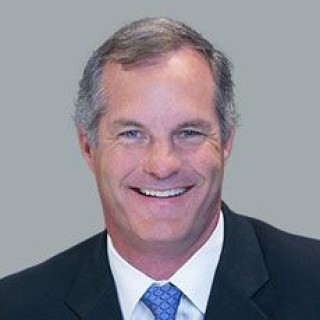Blog
HSAs--Bigger Employee Benefits, Smaller Healthcare Premiums
If you could encourage employees to receive better healthcare for less out of their pocket – all while saving the company thousands of dollars per employee on claims, would you do it?
This possibility exists today in what’s known as Consumer Directed Health Plans (CDHPs), and studies have shown that these types of plans reduce employer benefits costs significantly.
In fact, in my last post, I shared research from Anthem that showed cumulative healthcare savings of more than $9,000 per employee after four years in a CDHP.
CDHPs are widely available through all major healthcare insurance providers, yet many employers are unaware of them, or their benefits, to both the company and employee.
Today, we’ll look at one type of CDHP – the Health Savings Account (HSA), and how it’s changing the way employees purchase healthcare.
The Benefits and Costs of HSAs
HSAs have been around for over a decade now. From 2007 to 2013, HSA enrollment more than tripled, according to data coming from America’s Health Insurance Plans (AHIPs). As of Summer 2013, more than 15 million Americans used HSA accounts.
So what is it, and why is it so appealing?
Think of an HSA like a 401k plan for healthcare. HSAs are government-regulated investment accounts to which both employees and employers can contribute. The idea is that employees can use the money in their HSAs to pay for medical claims and pharmaceuticals over time.
To help keep employees cost-conscious when it comes to their healthcare, HSAs must be paired with high-deductible healthcare plans, which start at a $1,250 deductible per individual (double that if you cover more than just yourself). And, if employers contribute to employee HSA accounts, what employees don’t spend on healthcare, they keep.
The data has found time and time again that this type of plan equates to more cost-conscious spending by employees when they need healthcare services and thus, reduced insurance premiums for employers.
The savings doesn’t come from employees avoiding needed care, either. In fact, the 10th annual Aetna Healthfund Study released in 2014 showed participants of its CDHP spent 7 percent less but had a 9-percent increase in primary care physician routine visits when compared to standard PPO policy holders.
At Woodruff Sawyer, we implemented a CDHP strategy for our employees in 2009; today, about 80 percent are enrolled in an HSA plan. Prior to 2009, our costs were increasing at a rate of 17% each year. In 2009 alone, this strategy saved 15%, or $305,000, and our costs have averaged a 3.5% annual increase since.
The benefits of HSAs for employees make it an attractive healthcare option:
- Employee and employer contributions go in Federal and State tax-free (except Alabama, California and New Jersey for state income taxes).
- Interest gained is Federal and State tax-free (same above exception applies).
- Withdrawals are tax-free if used for eligible healthcare expenses.
- Employees can save a significant amount over time (much like a 401k).
An oft-understated benefit to HSAs is that employees can amass gains over time that far exceed the cost of medical bills. What’s not used towards medical bills annually carries over to the next year (including employer contributions), and HSA funds can also be invested in money market accounts, mutual funds or in some cases even self-directed stock market investments.
You can even leverage HSAs in unique ways to actually make money from medical claims. This article on Forbes.com offers an interesting twist on how to turn doctor bills into retirement income to gain the most from an HSA over a lifetime.
The author at Forbes is discussing the ability for HSA account holders to be reimbursed for eligible medical care expenses from their HSAs forever. Yes, forever.
What that means is if an employee of yours had surgery today, she could choose to pay for the cost out-of-pocket in order to keep the money growing in the HSA. Twenty years from now when she retires, she could reimburse herself tax-free for that same surgery.
After age 65, there are no penalties on withdrawing the HSA funds; and, a person can spend it on whatever he or she likes. The only caveat is that withdrawals not used for healthcare-related items are taxable (based on your tax rate at that time).
Medical care after retirement is a serious consideration. Fidelity released data that estimates a 65-year-old couple retiring this year will need an average of $220,000 to cover medical expenses throughout retirement. If that figure shocks you, it may be even more surprising to know the estimate doesn’t even include the cost of nursing-home care. A full 79% of pre-retirees underestimate the amount needed for healthcare.
Common Misconceptions About HSAs
Employers hold common misconceptions about HSAs, including fallacies like “only employees above a certain income will be attracted to the plan,” or that “it’s only a viable option for those who are healthy and don’t incur a lot of medical expenses.”
With all the benefits outlined earlier, it’s clear that these types of plans are for everyone – especially the cost-conscious. HSAs are appealing to both highly paid employees due to the tax advantages, and lower wage employees because they are rewarded for finding better value when they need healthcare services.
Another misnomer is that HSAs use plans that have different providers or limited networks compared to traditional plans. But an HSA plan is simply a high-deductible PPO that can utilize the exact same networks and receive all the associated discounts that a traditional plan does.
Lastly, keep in mind that while most services are subject to the higher deductible, all preventive care is free to the employee. Yes, free. Not even subject to a traditional copayment.
The ABCs of HSAs: Choosing and Communicating Wisely
Misconceptions aside, HSAs are IRS-regulated accounts, and can be complicated. To implement a company-sponsored HSA, employers need the ABCs: Awareness, a knowledgeable Broker and a Communication plan.
Companies need to be aware of how to pair HSAs with the proper type of healthcare plan. That’s why we always recommend using a third-party consultant/broker that deals with HSAs as part of the employee benefits package routinely, and can offer sound advice.
And, employees are responsible for their HSAs, so as an employer, communicating the details of these types of account will be key to ensuring everyone is getting the most out of the program – and not doing anything that’s potentially against regulations, like putting more into the account than the maximum contribution allowable ($3,300 per individual or $6,550 per family in 2014).
If you’re considering a CDHP like an HSA, here a few things to keep in mind:
- Be ready to educate your employees on the advantages of an HSA. It’s very easy to dismiss the HSA based on the high deductible alone, so be armed with the information that matters to your employees.
- Make sure your employees also know the best way to get the most from their plan by providing resources on how to shop for providers and procedures. The more people know, the better decisions they’re going to make, and the lower the cost of the premium you, the employer, are going to pay.
HSAs Put Incentive in the Right Place
Employees will need healthcare services. They will be going to the doctor, the hospital and the pharmacy – thereby controlling how much and where claims are incurred. Employers are at the mercy of those choices. HSAs, then, are a great way to put the incentive for employees in the right place.
Instead of having a traditional PPO or HMO that leaves a person with little to no incentive to find out where the best value is for a health visit or procedure, the HSA helps put the power in the consumer’s hands to do that research.
And that means healthy savings for everyone.
Author
Table of Contents












